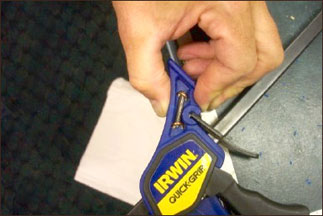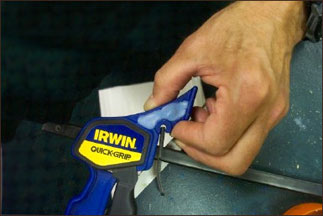
Bond & Repair:
Chemical Bonding
Chemical bonding actually penetrates into the surface of what is being bonded. The strength of such a bond is limited by the strength of the weaker plastic. Rubbing a drop of liquid on the surface of an unknown plastic will either appear to dissolve the surface in the case for example of P.V.C and A.B.S. or it will have no effect whatever as with Nylon, Polpropylene, Formica, H.D.P.E.
If it appears to dissolve the plastic, strong chemical bonds will occur with that plastic. These chemical bonds go right into the surface. Breaking a chemically bonded union of different plastics will result in a break on the side of the bond made of the weaker plastic. In the case of Acrylics, a brief exposure to the liquid may appear to have no effect, but bonding will be chemical and very strong.
Rapid Repair chemically bonds:
- Acrylics
- ABS, PVC, & CPVC plastics
Mechanical Bonding
If no effect is observed when rubbing a drop of liquid on a surface, as with Polypropylene, excellent mechanical bonds may be had. The strength of a mechanical bond comes from the hardness of the adhesive and the geometry of its application. Metals, stone, wood, or any hard rigid substance are all bonded mechanically. As with any mechanical bond, a roughened surface, girdling, drilling anchor holes, pinning, or tying will aid in the bonding process.
Rapid Repair mechanically bonds:
- Nylon
- Polycarbonates
- Stone & Concrete
- Textured Polypropylene
- Styrene
- Wood
- Textured Metals
- & more...








